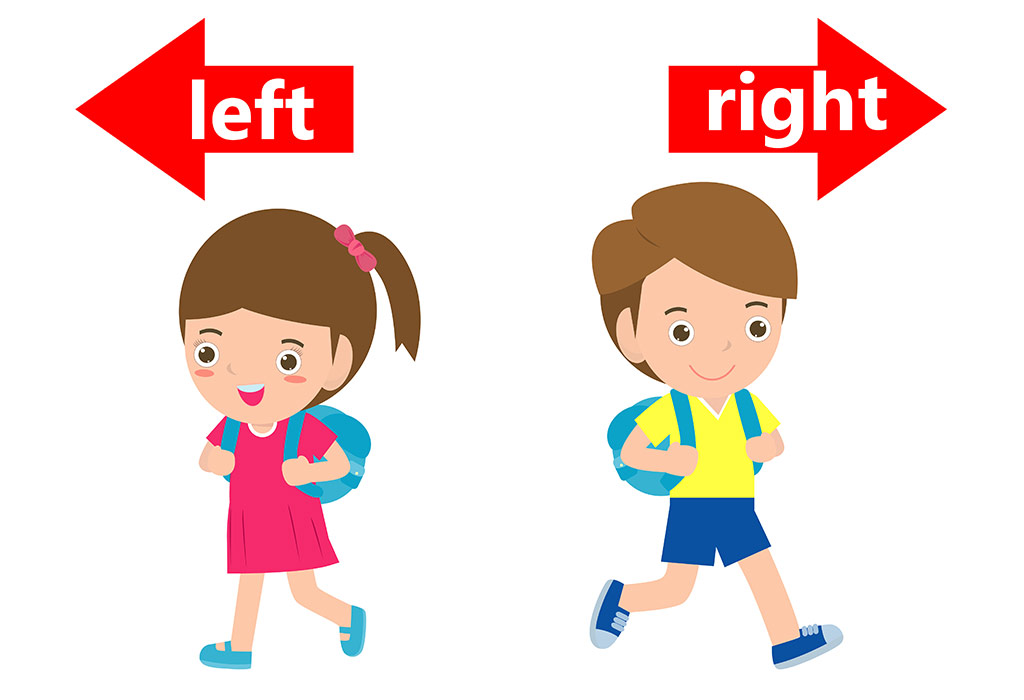Teaching directions to kids can be a challenging but rewarding task. It is important to be clear and specific when giving directions to children.
Using simple and concise language can help ensure that they understand what is expected of them. It can also be helpful to demonstrate the task, or give examples to help them understand it better. It is important to be patient and encourage children to ask questions if they are unsure of something.
Giving positive reinforcement and praising their efforts can also help motivate and encourage children to follow directions. With practice and consistent guidance, children will eventually become more skilled at following directions.
In this article, we teach preschoolers the concept of left and right when it comes to direction. Let’s jump straight into it.
When Should Your Child Learn About Directions?
It is important for children to learn about directions at an early age. This knowledge can help them navigate their environment and make sense of the world around them. Children can begin learning about directions as early as 3 years old.
At this age, they can start to understand basic concepts such as “up” and “down” and “left” and “right.” As they get older, they can learn more complex concepts such as “north,” “south,” “east,” and “west.” Children can also learn to use maps and other tools to help them understand and navigate their environment. It is important for parents to provide opportunities for children to learn about directions through play, exploration, and other activities.
Reasons Why Your Child Might Get Confused Between Left And Right
There are a few reasons why children might have difficulty distinguishing between left and right:
1. Developmental Factors
Children’s ability to understand and distinguish between left and right often develops gradually over time. Some children may have a harder time understanding these concepts than others.
2. Lack Of Practice
Children need to practice using and thinking about left and right in order to become proficient at distinguishing between them.
3. Difficulty With Spatial Awareness
Some children may have difficulty with spatial awareness, which can make it harder for them to understand left and right.
4. Difficulty With Language
Children who are still learning a language may have trouble understanding and using words like “left” and “right.”
5. Difficulty With Memory
Children may have difficulty remembering which is left and which is right if they have not had enough practice or if they are not paying attention.
Why Is It Important To Know About Left And Right?
If you’re teaching children left and right, here are reasons why it’s important for them –
- Helps children navigate their environment: Knowing left and right can help children understand their surroundings and find their way around.
- Essential for communication: Left and right are commonly used words to give directions or describe the location of objects.
- Important for math and science: Understanding left and right is important for concepts such as measurement and geometry.
- Necessary for tasks that require a sense of direction: Knowing left and right is important for tasks such as reading a map or playing a sport.
- Develops spatial awareness and problem-solving skills: Understanding left and right can help children develop their spatial awareness and problem-solving skills, which can be useful in many different areas of life.
- Enhances reading and writing skills: Knowing left and right can also be helpful for children when they are learning to read and write, as many written languages are read from left to right.
How To Teach Left And Right To Preschoolers
1. Use Concrete Examples
Use everyday objects, such as toys or household items, to show your child the difference between left and right. For example, you can hold up a toy car and say “This is the left side of the car” and “This is the right side of the car.”
2. Use Hand Gestures
Teach your child to point to their left and right sides using their fingers or their entire hand. You can also use hand gestures to show left and right when giving directions.
3. Use Verbal Cues
Use words and phrases like “on the left” and “on the right” to describe the position of objects.
4. Play Games
There are many games you can play to help your child practice left and right. For example, you can play a game where you hide an object and give your child directions to find it using left and right.
5. Use Visual Aids
You can also use visual aids, such as pictures or diagrams, to help your child understand left and right.
6. Repeat And Reinforce
Repetition is important for young children learning new concepts. Use left and right frequently when interacting with your child and reinforce their understanding by regularly reviewing the concepts.
7. Use Musical Cues
You can also use music to help your child learn left and right. For example, you can use a simple tune and assign a specific hand gesture to each direction (e.g. left hand on left ear for “left”).
8. Incorporate Left And Right Into Everyday Activities
Look for opportunities to use left and right in everyday activities, such as dressing, setting the table, or playing games.
9. Use Real-Life Examples
Use real-life examples to help your child understand left and right. For example, you can point to the left and right sides of your own body or the body of a stuffed animal.
10. Be Patient And Encouraging
Learning new concepts can be challenging for young children. Be patient and encourage your child as they learn left and right.
Games and Activities Of Left And Right For Kids
1. Simon Says
This classic game is a fun way to help kids practice left and right. You can give commands like “Simon says touch your left ear” or “Simon says touch your right foot.”
2. Follow the Leader
Choose a leader and have the other children follow them around, copying their movements. The leader can incorporate left and right movements, such as “step to the left” or “turn to the right.”
3. Scavenger Hunt
Hide objects around the room and give kids directions to find them using left and right. For example, “Find the toy car that is to the left of the couch.”
4. Red Light, Green Light
This game is played like the traditional “Red Light, Green Light” game, but with the added twist of using left and right. The leader can call out “Left!” or “Right!” and the kids have to respond by moving in the corresponding direction.
5. Left and Right Musical Chairs
Set up chairs in a row, with one less chair than the number of players. Play music and have the kids walk in a circle around the chairs. When the music stops, the kids must find a chair and sit down. The player who doesn’t find a chair is out. To add a left and right element, the leader can call out “Left foot on a chair!” or “Right hand on a chair!” and the kids must respond by putting their corresponding body part on a chair.
6. Obstacle Course
Set up an obstacle course and give kids directions to navigate it using left and right. For example, “Crawl under the table and then take two steps to the right.”
7. Left and Right Simon
This is a variation on Simon Says where the leader calls out actions and the kids have to respond by touching their left or right body parts. For example, “Simon says touch your right elbow!”
8. Left and Right Matching
Cut out a set of left and right hands and feet from construction paper. Mix them up and have kids match the left and right body parts together. You can also use other objects, such as toys or household items, to create a matching game.
It is important to be patient and to give your child plenty of opportunities to practice and learn about left and right at their own pace. With time and practice, your child should be able to understand and use left and right with ease.
Also Read:
Inside and Outside Concept for Preschoolers
Concept of Tall and Short for Preschoolers
How to Teach ‘Taking Turns’ to Kindergarten Kids










